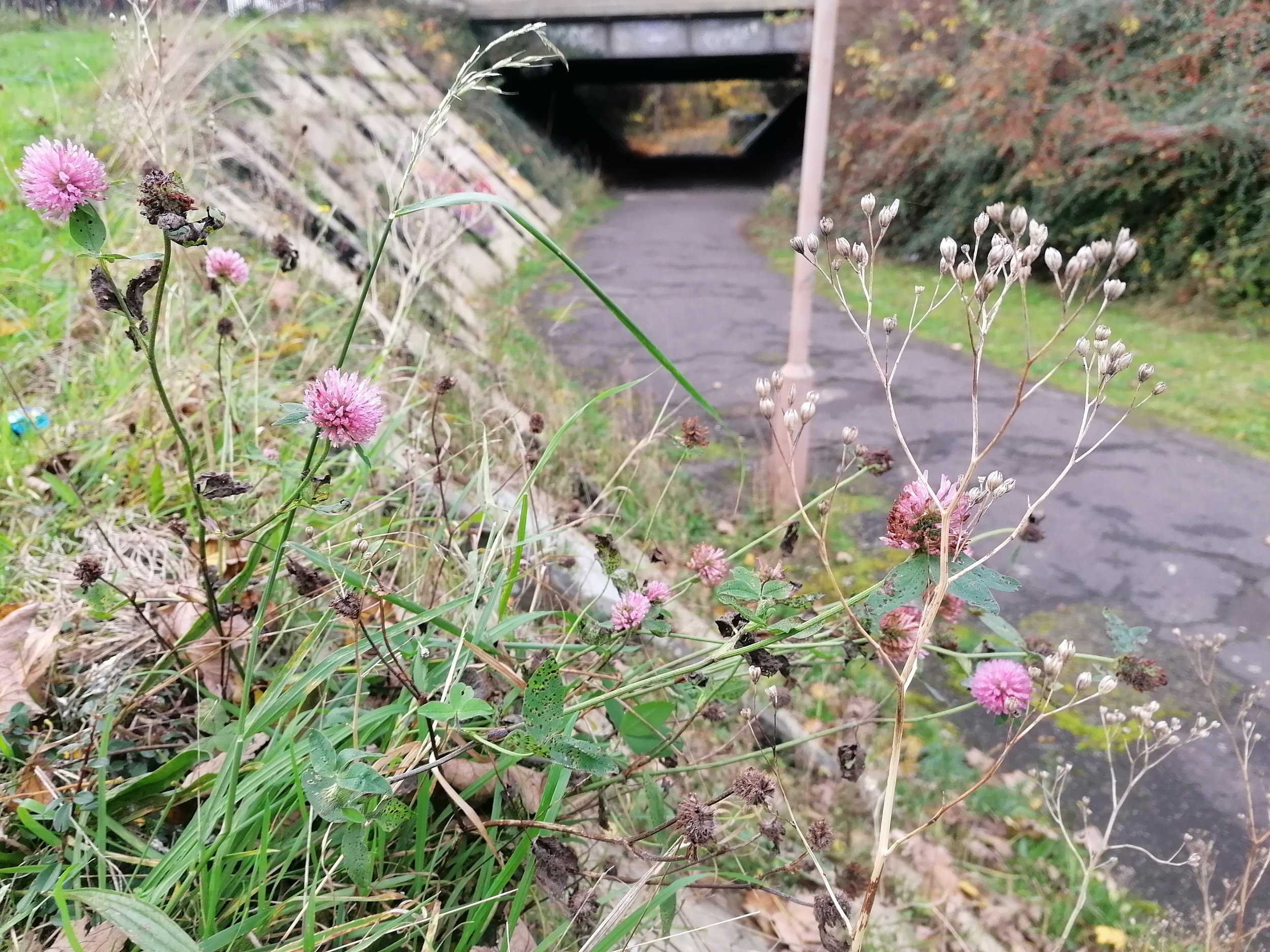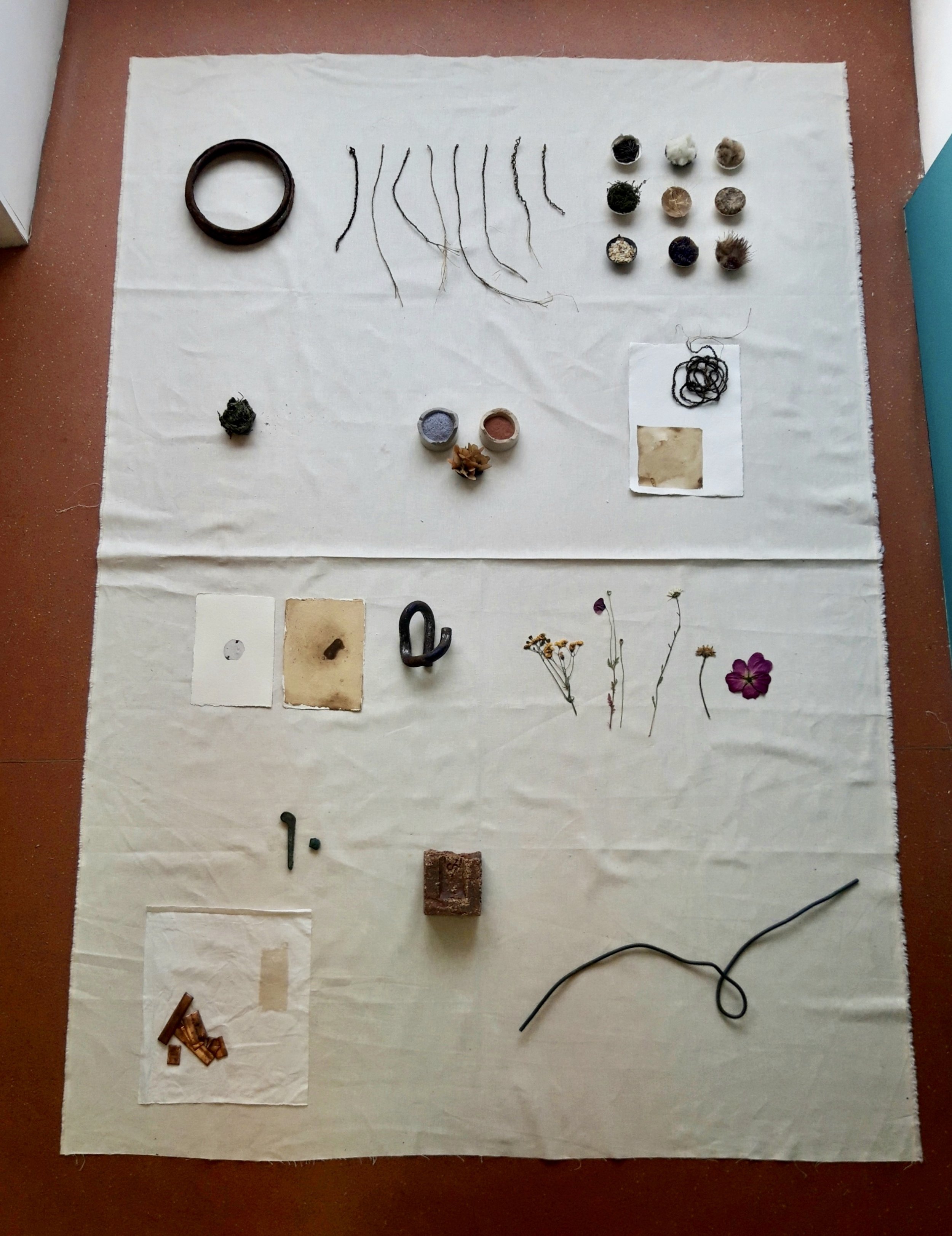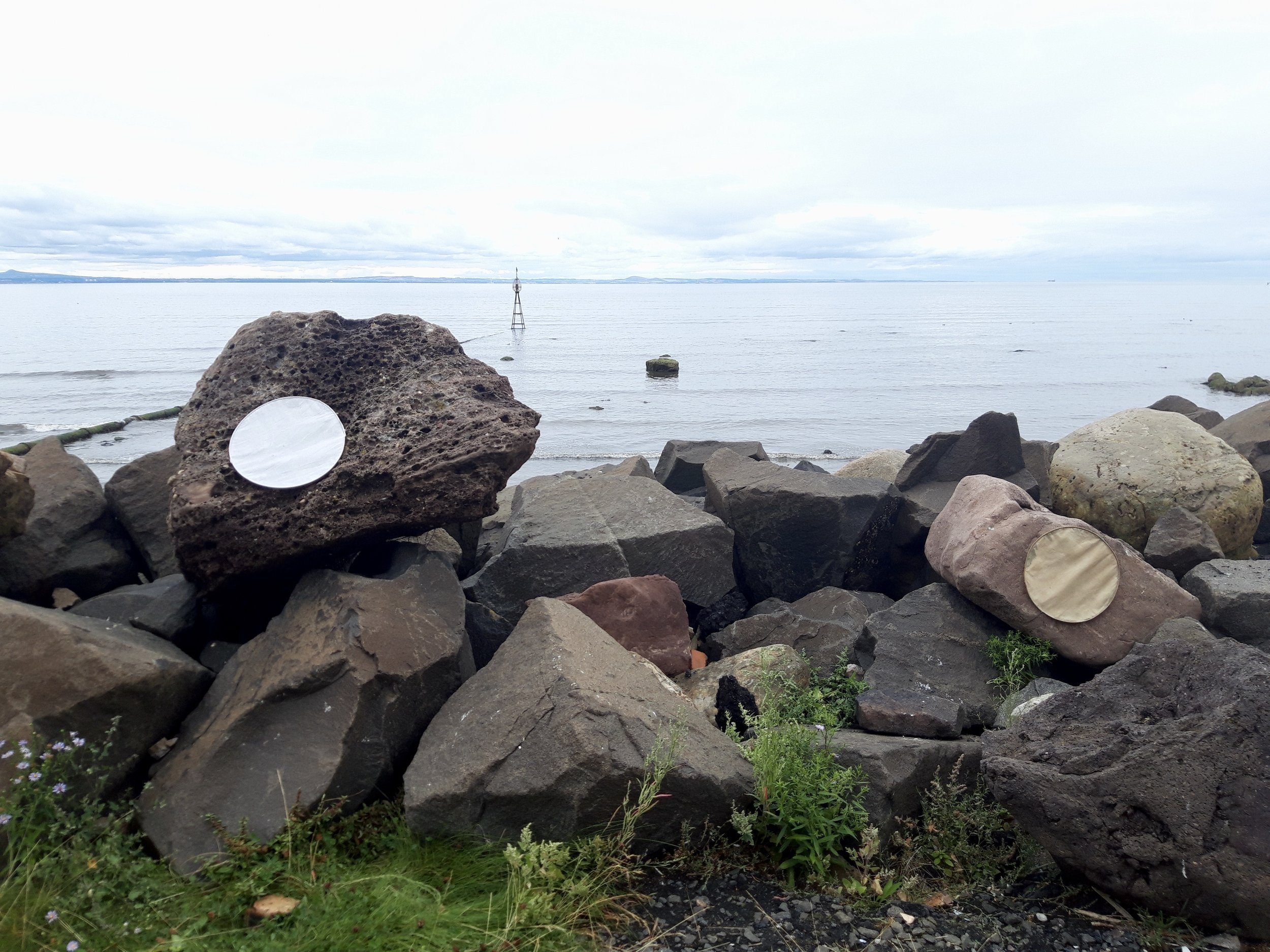





A breath between with Elise Ashby was formed in Autumn 2020 during the pandemic. As a collaborative duo, our ongoing work focuses on ecological themes, in particular care for liminal spaces within urban environments and how they can activate dormant possibilities.
While living in Leith together, we began - through walking - to notice derelict, unmanaged sites that were vacant and stalled in development. Within this pause, we began to observe the biodiversity of plant life in one particular site on the edge of Leith Links. We watched the self seeded plants transition through the seasons from dormancy into bloom, noting buddleia, poppy, rose bay willow herb, dock, herb robert clover, thistle and many more. Creating inventories of plants, we also began to spend time in the site itself, paying attention to it's unfolding. Litter picking, reading and having conversations, sitting in -thrown away- chairs; a fondness formed over time for the space and wildness of plant life reclaiming. We named the site corner garden. The potential of corner garden, in its transitory, unfixed state activated an untamed creativity -
a wildness,
a green place growing between the cracks, out-with the normal narrative of the city structures







During the exploration of corner garden, we began to walk further afield together through Leith, Granton and Portobello.
Peripheri, Granton with Art Walk Projects was a two-part exploration of the stretch of coast between Portobello and Granton Harbour. The project invited the general public to experience the physical effects of long distance walking along the edges of the city, engaging with both derelict and waste land sites.
During part one, participants walked the distance between Portobello, ending in a brownfield site in Granton. Along the shoreline and through waste management sites, the route encouraged conversation around the ways in which the coast is accessed and used both by individuals and industry currently and in the past.
Part two culminated in a site responsive art making session, held at Granton breakwater. Memory mapping through drawing was invited, recalling landmarks encountered during the walk. Participants were invited to gather materials within the site to assemble in response to themes discussed. Reciprocal activities were encouraged through clearing and litter picking, guiding a narrative with the site through it’s materiality. With nearing Granton planning developments within the site, participants had the opportunity to discuss how they felt about these impending changes and alterations in a landscape.
Maps, photographs and sound recordings of the walk were archived, noting a material exchange within a liminal landscape.





Following on from the Peripheri in Granton, Elise and I were invited by A+E (Art & Ecology, Accident & Emergency) to lead a Reading Towards Action session.
While walking together in Granton we met a woman named Lesley Hamilton-Messer who had created an inventory of plants and animals that were developing a newly, re-wilded ecosystem in the Granton development site area. We invited Lesley along to the session to read her comprehensive list aloud, noting over 200 plant species. The walk braided together; reading, slow walking and recording the living species within the site.. The texts chosen focused on our walking focus- care over control, and the importance of imagination in recognising the agency of other life forms, both human and non human.
We read aloud the poems - Margaret Atwood’s The Moment and Ursula LeGuin’s Infinitive and an extract on ‘Walking the Imagination’ from Ernesto Pujol’s Walking Arts Practice. We invited participants to take part in creating an ephemeral water mural with sea water gathered from the shore. Walking and drawing at dusk, the sky was a pink and purple haze as we quietly scribed temporary drawings and writings of plant life into concrete.
More information regarding the project can be found here- https://artandecology.earth





Further expanding upon Peripheri , Elise Ashby and I developed Peripheri, tending to corners with Art Walk Projects. Creating a walking route, connecting a series of peripheral places in Portobello. Peripheri, tending to corners explored the ecology of place, turning attention to plant life within unmanaged places. Over the course of six months, the four sites were connected together through the act of walking, drawing and sensory mapping of the site. A walking community formed over time, experiencing these sites a local collective.
Walking through the unfolding of the seasons, participants were invited to return to each site, noting the changes that were occurring both organically and through human intervention. Over the second half of the project, repeating the walk in reverse, Peripheri opened up a dialogue with the passing of time in a specific landscape vulnerable to change.
We explored pigment making through plant and found materials nearby including brick, mussel shell and nettle. We also created various greens with red cabbage and soda. experimented with seasonal colour. The project culminated with an exhibition in Autumn 2022, in Portobello Baptist Church.







The exhibition took place in September 2022, displaying a series of photographs, maps and drawings created by participants;
Catriona Campbell, Alison Chisolm, Shirley Fife, Alvaro Castanao Garcia, Tamsin Grainger, Celeste John-Wood, Judith Nixon, Lucas Priest, Clare Watson and Laura Young.
We created a foraged floor map, reflective of the sites as we experienced them through the seasons; with a particular focus on the plant life we encountered,
Making use of a mixture of found objects and foraged natural materials; we approached the materials as an opportunity to re-articulate the connection between art making and the environment. Some materials were displayed in their potential or a within a process rather than as part of fixed artworks, as an invitation to a considered form of art making which is rooted in a landscape.
During the exhibition, treated discs were set into the landscape, subject to the elements and open to human activity. The works echod the transient state of place and the often vulnerability of developed habitat. Reflective of material and plant life, the discs were secured with braided nettle and treated with mussel shell ink, Himalayan balsam, buddleia nettle ink and rust. Participants and members of the public were invited to walk and connect all four sites together, engaging with the installed works through painting with pigments.












